The late 90’s did not only see an incredible influx of standard RPGs on the market, it saw experiments of all kinds too. Tactics Ogre, released in 1995 in Japan, managed to create an intricate, complex, and ambitious kind of tactical RPG which could narrate grand events in ways a typical game could not. Its vast cast, political scheming, and wide range of tactical options for combat cemented a formula and created a classic.
Final Fantasy Tactics, released a couple years later, picked that same idea, added an incredible amount of combinations to its job system, and tinted the sober medieval tale with dark fantasy. It was a game unlike any other at the time, mixing ingenious gameplay with superb storytelling and atmosphere. Little did we know, however, that these two games would never have a true successor, one capable of living up to their quality and improving their ideas.
It’s been 25 years since then and we’ve seen dozens of copycats trying to live up to those two classic games. Tactics Ogre, in particular, was copied over and over in pathetic ways, plenty of games using the same visual identity and combat system in vain attempts to replicate the glorious old days. Final Fantasy Tactics, however, was copied in different ways. Many developers tried to use that formula with tweaks, seeking for something new to click and create a new classic. Well, all of them have failed.
Triangle Strategy is yet another attempt of reliving those two games. It’s a decent effort, perhaps one of the best produced copycats released since then, but it fails nonetheless. The reason is simple, much like every other tactical RPG trying to be Final Fantasy Tactics, it insists in removing exactly the things that made that game so much enjoyable and unique.
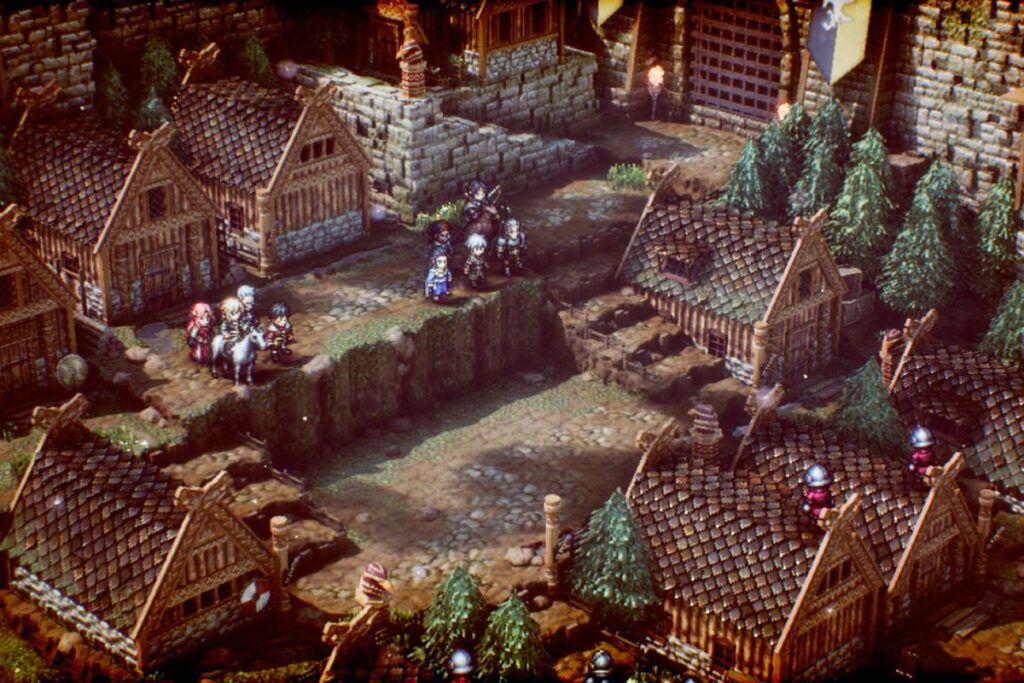
A bad start
Triangle Strategy’s first mistake is its narrative. Here we are presented to the typical mumble jumble about how three kingdoms have fought against one another over natural resources, things escalated to all-out war, and everything finally managed to be settled until new treachery abounds. It’s the very same idea of almost every other tactical RPG out there, in fact, even standard RPGs have copied this over-exposition of the same background, delivered by cheesy narrators and trying to explain everything to its viewers before the game even starts. It’s boring, it’s childish, and most importantly, it’s not how either Tactics Ogre or Final Fantasy Tactics started.
It seems, for me, that even Square Enix is intimidated by the natural narrative and exposition that Final Fantasy Tactics achieved. In that game, we were thrown right away to see Ramza amidst a growing conflict, only to slowly understand the stakes as the game progressed. It felt natural and rewarding, it made the game click when you finally understood who your enemies were, which parties were allied to each other, who you could trust and who you could not.
Triangle Strategy exposes everything in the game right away, giving you names for every kingdom and leader, showing every minister of Hyzante, every general, etc. It seems afraid to leave things for you to understand, or perhaps the game thinks its own characters are too awesome to not be fully presented right away, much like a teenager creating new original characters, and with that it becomes a stale game that we’ve seen in the dozens in past decades. The villains are obviously bad people and thus there is no treason or surprises, only obvious actions. It brings down any chance of living up to the classics the moment it spits a narrator detailing to you about the world before you even fight your first battle.
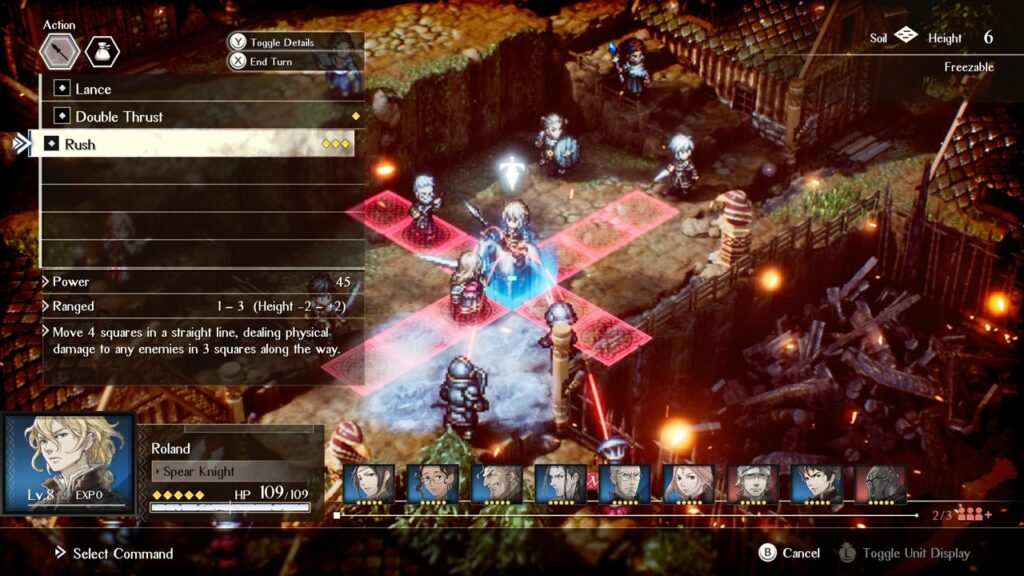
It’s also too rigid
Another aspect that made Tactics Ogre, and most importantly Final Fantasy Tactics, great was their freedom to experiment with the game. We had dozens of jobs, branching upgrades, powerful pieces of equipment, customizable skill-sets, and a lot more. We could make gunslinger ninjas, dual-wielding magic knights, geomancer healers, etc. The options were endless.
Triangle Strategy does exactly the opposite, with a system that is annoyingly rigid, giving you only one path to evolve your characters, their weapons, and their skills. You cannot experiment, you cannot overlevel, you cannot exploit the game with weird combinations, you cannot approach battles with a completely different mindset. You are locked to what the game offers to you, capped by level restraints, and given only the choice of which allies to bring to battle.
Once again, this makes Triangle Strategy a game that feels stiff, too scared to let players think for themselves.
It could be a normal RPG too
Yet another aspect of the early TRPGs classics (and other successful ones like modern Fire Emblem games) was the fact that those games span across multiple years to deliver this grand scale narrative. We were controlling Ramza and Denam, yes, but what mattered was the larger picture, and thus we had time skips to push us to when things really mattered. The “visual-novel” style of presenting cutscenes had a reason to exist. If a normal RPG did so many narrative jumps like in those games, it would feel scattered, butchered.
Triangle Strategy, however, never really needs this kind of presentation. It’s a continuous story told in a short span of time and in a limited territory. The cutscene presentation, in this regard, makes the game unbearably long, with an attempt to present every little detail of the world that doesn’t really matter for the bigger picture. It could work way better as a typical RPG, with an explorable world map and locations, standard turn-based combat, and the removal of useless allies you recruit to give the game some form of customization. In fact, the small “exploration” phases of Triangle Strategy make this quite obvious, working as a charm for the entire game while the “click this icon for cutscene” starts gets annoying after just a couple chapters.
It’s as if the developers just wanted to copy-cat Final Fantasy Tactics and forgot as to why the game needed to be a TRPG and have its traditional form of narrative in the first place. It’s nostalgia winning over game design, and that’s bad.
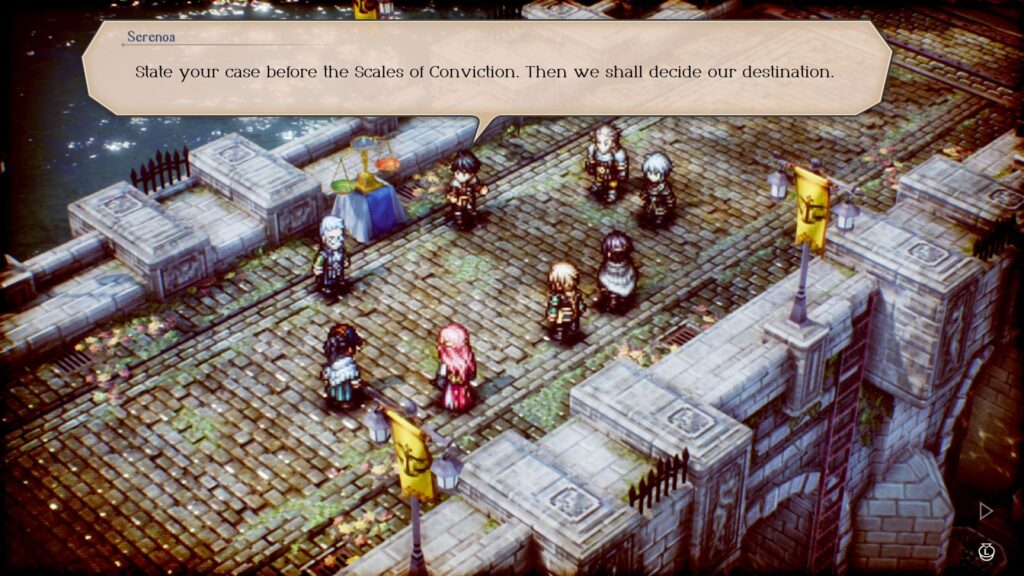
It’s beautiful though
Talking about nostalgia, another obvious aspect that this game tries to win its audience is through its visual presentation. Triangle Strategy uses the same style as Octopath Traveler, delivering gorgeous 2D-HD graphics, as Square Enix calls it. The result is incredible and fitting for a game that tries to relive past glories.
In a way, the mixing of 3D background and 2D sprites has always been overlooked by fans of old RPGs. In almost every discussion people prefer to glorify SNES games like Chrono Trigger and Final Fantasy VI for its graphical beauty and forget how amazing the games in the next generation, such as Breath of Fire IV and Suikoden II, were. Triangle Strategy seems to make a point as to why this mixture can be so alluring, delivering a stunning game that almost makes you forget the game’s flaws during its long and never-ending cutscenes.
The modern 3D visuals, with its particles, lighting effects, detailed areas, and charming quirks merge nicely with the beautiful sprites. The only problem here is that the sprites themselves seem to try and copy old games far too much, becoming incomprehensible blobs of colors at many points. They could certainly make use of a higher amount of pixels, especially because they are now being presented in high definition displays. They are charming, yes, but perhaps the nostalgic factor lingers too high to allow for true beauty to be achieved here.
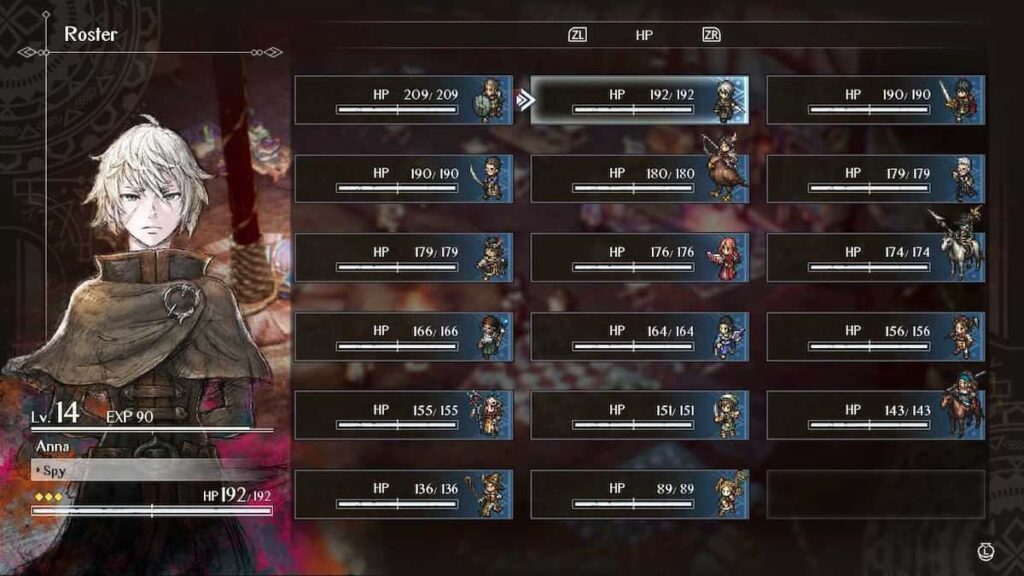
Well, there’s the story though
As I’ve mentioned, Triangle Strategy could perhaps do better if it was a standard RPG game because of how its tale progresses. That doesn’t mean the tale is bad though. In fact, Triangle Strategy manages to deliver an outstanding warfare drama overall, merging decisions with branching storylines and giving an impressive importance to your allies’ thoughts due to the game’s key moments, when you need to decide a course of action and have the important people in your party vote after a bit of sweet talking.
If there is a hit when Triangle Strategy tries to mimic the old games, it is certainly in the main cast department. Although it boasts dozens of recruitable characters typical for the genre, it focuses a lot on the core group around Serenoa, giving these people more tangible ideas and opinions and making them stick for more than just options in the battlefield or cool design. Roland, Frederica, Benedict, and the other lot may not evolve as people during the war, but they have vocal opinions that matter in the long run and play their roles in expected ways.
Sadly though, the villain-side of things is not as interesting. Every bad guy is plainly bad and has evil motivations that never make you question whether you should be fighting them or not. They could’ve been more interesting characters if better exposed in the narrative or left in mystery, but with what we are offered we can only see them as one-dimensional bad guys who will betray and kill for sheer fun and not because they believe in something that at least makes sense.
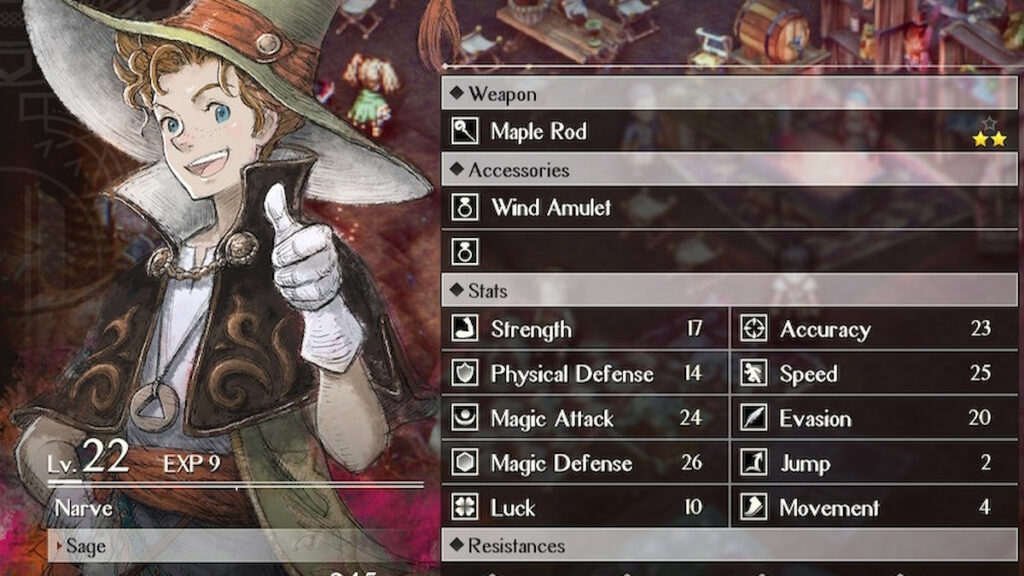
A game hidden under the shadow of the classic
Triangle Strategy seems to follow Square Enix’s overall strategy since acquiring new developers to create low-budget RPGs. Much like I Am Setsuna, Lost Sphear, and Bravely Default, the game tries too hard to hit nostalgia and do too little to be its own thing. The rigid mechanics and systems, the visual presentation of menus, the graphical choices, and even the overused story cliches are clear indicators that those games were never really made to be great, just to please fans who miss too much the old classics. Although artistically beautiful, Triangle Strategy falls short of being something else, with unnecessary exposition, lack of surprises, and a lack of customization and options for a game that was supposed to be “tactical”.
It’s good to see the mixture of 3D scenarios and 2D sprites coming back though, and here we have a glimpse of how gorgeous this could look in modern-day consoles. It’s just a matter of developers stopping trying to present everything on a platter to the audience and creating experiences that allow us to uncover mystery for ourselves before being exposed by the narrative, as well as removing restraints and allowing us to customize characters and explore the game mechanics in ways that are really fun.
It’s a decent effort to remind us of the great old times of TRPGs, but really, replaying one of the classics or trying the better modern TRPGs such as Fire Emblem: Three Houses and Valkyria Chronicles is still more enjoyable and rewarding.
Detailed Scores
-
Production
-
Content
-
Polish
-
Concept
-
Fun
